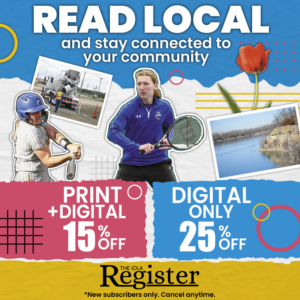MIAMI — Tens of millions of people who have chosen not to vote in recent U.S. elections could be headed to the polls this November in a massive wave that would change the look and feel of the presidential contest, according to a newly published study of “chronic non-voters.”
The sweeping survey of thousands of inactive voters and eligible but unregistered adults, commissioned last summer by the Miami-based John S. and James L. Knight Foundation, found that roughly half of those interviewed were “absolutely certain” they’ll vote in 2020. And given estimates that 100 million eligible adults skipped the last presidential election, that could mean a surge of unlikely voters.
But a sudden uptick in participation wouldn’t necessarily benefit one party. The number of voters who said they’ll vote to reelect Trump was roughly the same as those who said they’ll vote for his eventual Democratic opponent.
“All things being equal, it should be a wash,” said Fernand Amandi, the Miami-based pollster whose firm conducted the study from July to August. “But if one side manages to out-hustle the other with this group, that could be an advantage. It comes down to the fundamentals of what kind of campaigns are run, and persuasion.”
The last time Americans elected a president, more than 130 million people voted. But the turnout rate in 2016 dropped as millions of people chose not to participate.
In order to better understand why so many people stayed home, the Knight Foundation commissioned Bendixen & Amandi International to speak with 14,000 people about everything from how they feel about politics to their household income. The ensuing study — a massive endeavor developed with the help of a nine-person review committee — included a national survey of 4,000 adults who participated in one or fewer of the last six presidential and midterm elections, and polls across 10 battleground states, including Florida.
The national study found that people who chose not to vote varied widely in terms of demographics and income levels. It also supported findings from previous studies that a plurality of people who skip elections choose not to vote simply because they don’t like the candidates.
But, on the heels of a midterm election with the highest turnout in more than 100 years, more than half of non-voters surveyed said they’re “absolutely certain” they’ll vote in November.
Among those who plan to vote, the largest factor motivating their decision to participate this year was Trump, regardless of whether they support or oppose the president.
“I expect there to be higher turnout. There’s no doubt about that,” said Michael McDonald, a University of Florida associate professor of political science who tracks voter turnout. “We’ve seen across the board an unusual interest in elections” since 2016.
The findings of the Knight Foundation survey could be seen as good news for Vermont Sen. Bernie Sanders, the emerging front-runner for the Democratic nomination. Sanders’ strategy includes a plan to “expand the electorate” by convincing young people and disillusioned voters to support a candidate who has spent decades catering to the working class.
After the Iowa caucuses, Sanders noted repeatedly that even though turnout was less than he’d hoped, young people participated in greater numbers than in 2016. “That’s a huge voter turnout. And we do that all over the country,” Sanders asserted the following Sunday on CNN’s “State of the Union.”
But of those surveyed, the number likely to vote for Trump was roughly equal to the number planning to vote for the eventual Democratic nominee. And in Florida, a key battleground state that Trump likely must win to remain in power, the numbers favored the president, with 36% of Floridians surveyed supporting Trump and 31% supporting the Democratic nominee.
“There’s a stereotype out there that if non-voters all turned up to the polls, it would be a big win for Democrats. That’s not what we found here,” said Evette Alexander, the Knight Foundation’s director of learning and impact.
Trump won in 2016 thanks in part to support from unlikely voters. And the Republican National Committee has invested millions in a data operation that allows Republicans to use reams of data about voters to “micro-target” them with digital ads tailored to address their individual concerns and needs.
“It’s one thing to know (voters) are out there. It’s another to know who they are and how to get them,” Rick Gorka, deputy communications director for the RNC, said in an interview. “There’s no other data program out there that matches what we’re doing, and we have to have the ground game to go out and capture those voters.”






